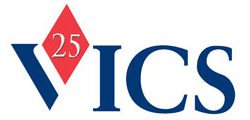- RFID can “take 96 percent of the time and effort out of cycle counting.”
—RFID Research Center, University of Arkansas, Dillard’s Initiative,
Apr. 30, 2009; Bloomingdale’s Initiative, Aug. 24, 2009
- RFID can increase inventory accuracy between 17 percent and 27 percent
—RFID Research Center, University of Arkansas, Dillard’s Initiative,
Apr. 30, 2009; Bloomingdale’s Initiative, Aug. 24, 2009
- For the various sales-velocity categories from 0.1 to 7 units per day, out-of-stock reductions ranged from 20 percent to 32 percent. When products are selling between 7 and 15 units per day, RFID reduced out-of-stocks by 62 percent. Overall, for products selling 0.1 to 15 units per day, out-of-stocks were reduced by 30 percent. This reduction in out-of-stocks greatly reduces shelf replenishment as a source of out-of-stock problems. Thus, retailers can begin to focus on other root causes of out-of-stocks, such as store ordering and store forecasting, and how RFID may be used to attenuate these and other causes of out-of-stocks.
—”RFID’s Impact on Out-of-Stocks: A Sales-Velocity Analysis,”
RFID Research Center, University of Arkansas, June 2006
- Perpetual inventory is incorrect for 65 percent of items, resulting in an estimated 10 percent reduction in profit due to inaccuracy.
—Dr. Bill Hardgrave, Auburn University
- Despite the key role of inventory accuracy, past studies suggests that it continues to be inaccurate about 65 percent of the time.
—(Raman, et al., 2001), RFID Research Center, University of Arkansas,
JCPenney Initiative, Apr. 13, 2010
- National and worldwide average out-of-stock: approximately 8 percent
- Potential sales loss to retailers: approximately 3.2 percent
- Potential sales loss for suppliers: approximately 2.8 percent
—Dr. Bill Hardgrave summarizing pilot findings, U Connect 2010
- Best-in-class retailers using RFID averaged 92 percent inventory accuracy in a recent study, which is 21 percent better than average companies and more than twice as accurate as technology laggards.
—”Item-level RFID Tagging in Retail,” Aberdeen Group, June 2010
- RFID readers can process 18,000 items per hour, Tagsys reports, with a read accuracy of 99 percent. According to Serge Blanco’s Mathieu Pradier, the system is a huge time-saver. “Before,” he says, “we had to open individual boxes and read the bar codes on items one by one. We needed 10 people to receive 20,000 garments. Now, we need two people for 35,000.” Consequently, he notes, his firm “moved many employees into customer service or quality-control jobs.”
—Serge Blanco case study, RFID Journal coverage, December 2009
- Research into item-level tagging demonstrated that the benefits of radio frequency identification do not end at the store level. If we begin the investigation of RFID’s benefits at the store, then both the tagging and the benefits can be pushed up the supply chain. Ultimately, the maximum value for RFID is realized when it is used throughout the supply chain, in the areas in which it provides the most benefits for one or more specific business processes.
—Bloomingdale’s study
 English
English Español
Español Français
Français Italiano
Italiano 中文(简体)
中文(简体) Nederlands
Nederlands Deutsch
Deutsch Cрпски језик
Cрпски језик Română
Română Svenska
Svenska

